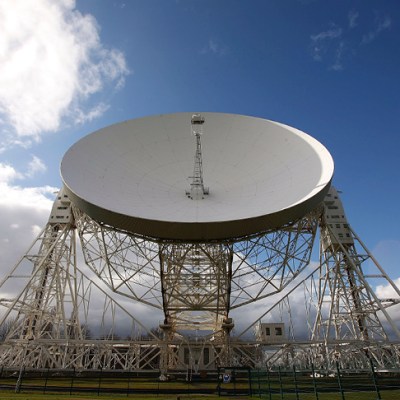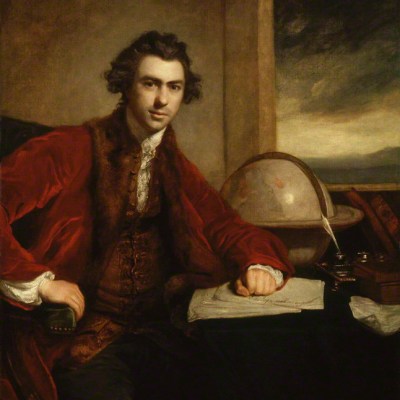When amateur astronomer William Herschel, a German living in Britain, discovered Uranus in 1781 his initial plan was to name it ‘The Georgian Planet’ in tribute to George III. Predictably, that idea didn’t fly outside England but it showed the tight relationship between monarchy and science in London at this time. Herschel, whose rough-looking telescope is on display at the Science Museum’s new permanent display, Science City, was duly rewarded with an appointment as the king’s personal astronomer.
George III loved science. Midway through Science City there’s a display devoted to his instruments. It is dominated by a vast brass grand orrery, extravagantly decorated with horses’ heads and with a handle that if turned would demonstrate the movement of the planets and their moons. There’s also a ludicrously ornate silver telescope and a huge ‘philosophical table’, a desk containing a bizarre ensemble of cogs, wheels, levers and wires for peculiar experiments and demonstrations. It’s like something from a steampunk novel, a feeling enhanced by the soundtrack of wheezing steam engines drifting up from the Industrial Revolution gallery two floors below.
A ‘philosophical table’ in Science City at the Science Museum, London. Photo: © Jody Kingzett/Science Museum Group

Many of the king’s instruments were made by George Adams or his son, also George Adams, and instrument-makers such as these present a central strand in the gallery’s story about science in London from 1550 to 1800. London emerged as a leading city for scientific research under Elizabeth I when European instrument makers were welcomed to the city, both as Protestant refugees and also because of the Crown’s desire to improve skills at home. It was understood that instruments were needed to navigate and measure the world; they were essential tools of Empire. These magnificent and often mysterious instruments – slide rules, magnets, sundials and chronometers – fill the gallery’s cabinets. A selection of quadrants, made of brass and wood, is laid out like a display of antique fans in the Victoria and Albert Museum across the road. There were also gadgets for the general public, such as the polemoscope, opera glasses with angled mirrors for spying on neighbours at the theatre, and an 18th-century pedometer.
The exhibition looks at leading artisans from throughout the period as well as their beautiful creations. There’s the workshop of Elias Allen, who made sundials; Edmund Culpeper, who made fine mathematical instruments and telescopes in Moorfields; Benjamin Martin, an entrepreneur whose focus was on making cheaper scientific instruments for use at home; and Jesse Ramsden, who invented the dividing engines that mechanised the process of manufacturing dividing scales for the very instruments that were being used by navigators. This was a closed circle – London craftsmen created more precise instruments for explorers and industrialists, whose successes with those instruments required ever more and better equipment, whether for measuring the cargo in a ship’s hold, surveying a canal or, in the case of instruments belonging to Captain Cook, mapping a recently encountered continent. In a circle within the circle, Cook’s booty came back to London to form the first museum, Sir Ashton Lever’s Holophusicon, a catalogue for which appears in the exhibition.
Detail of a terrestrial globe made in 1766 by George Adams in 1766. Photo: © The Science Museum Group

The instruments needed skilled users. Seventeenth-century London did not have a university, but it did have the Royal Society. There’s a section of items from the society’s collection looking at Boyle, Hooke, Wren and Newton – the four dominant scientists of the era – among them Newton’s death mask. Public spectacle and experimentation were part of the Georgian cultural experience. When Westminster Bridge was built, it was presented as a scientific achievement as much as a piece of architecture or infrastructure thanks to the piledriver created by the watchmaker Janes Vauloue. A painting by Samuel Scott captures the bridge mid-construction in 1742. More whimsical were the balloon rides that took place in London pleasure gardens and were often advertised as exercises in scientific experimentation, much to the scorn of real scientists. A portrait shows Letitia Ann Sage, the first British female balloonist. Interactive boards feature four digital maps of London with points of interest denoted – prod the correct one in the right place and you’ll be rewarded by a cartoon of a balloon taking flight accompanied by a cheery fanfare.
Isaac Newton’s death mask in Science City at the Science Museum, London. Photo: © Jody KIngzett/Science Museum Group

While the balloonists went upwards, empire gatherers were crossing oceans. The intertwined, complex and often uncomfortable relationship between empire, industry, the Crown, science, exploration and exploitation is a subtle thread that runs through the exhibition. Among the artefacts belonging to George III there are two globes made by George Adams, one terrestrial and one celestial, adorned with patriotic claims celebrating scientific and imperial achievements such as George Anson’s recent voyage round the world. The inference is clear: Britain would soon dominate land, sea and sky; and science would be the key.
‘Science City 1550–1800: The Linbury Gallery’ at the Science Museum, London, is open now.


